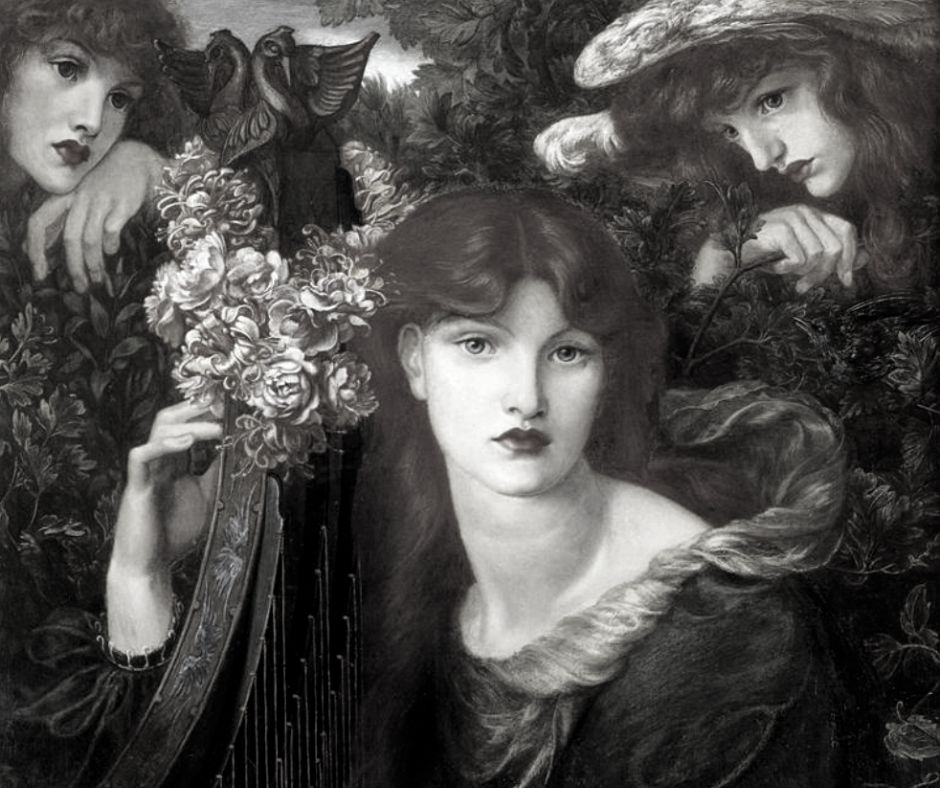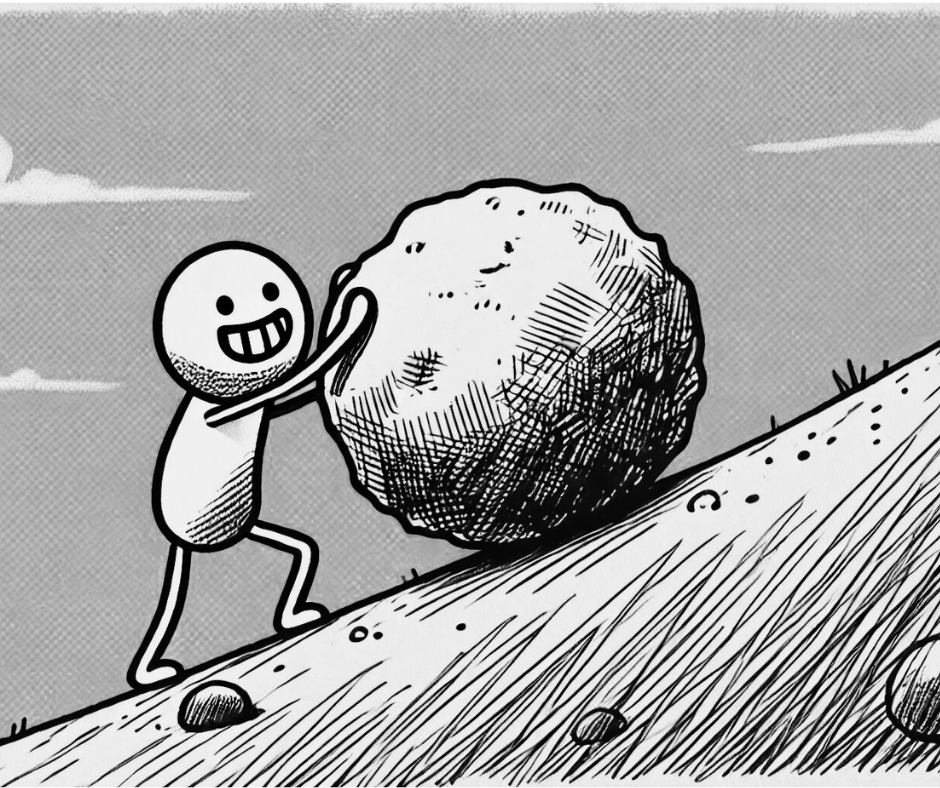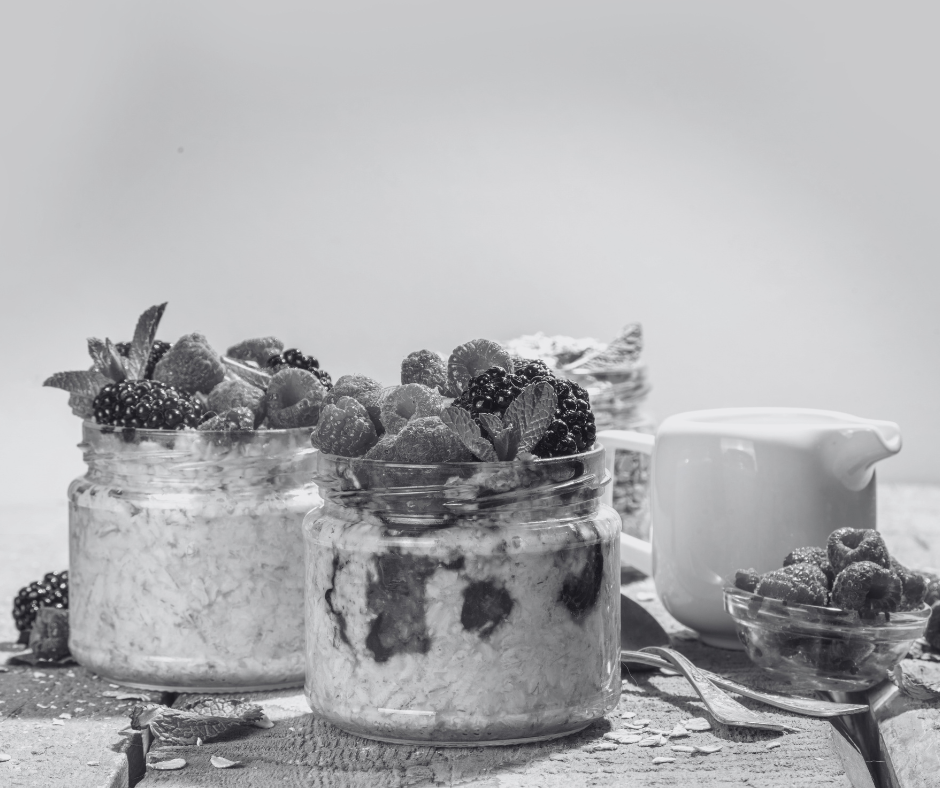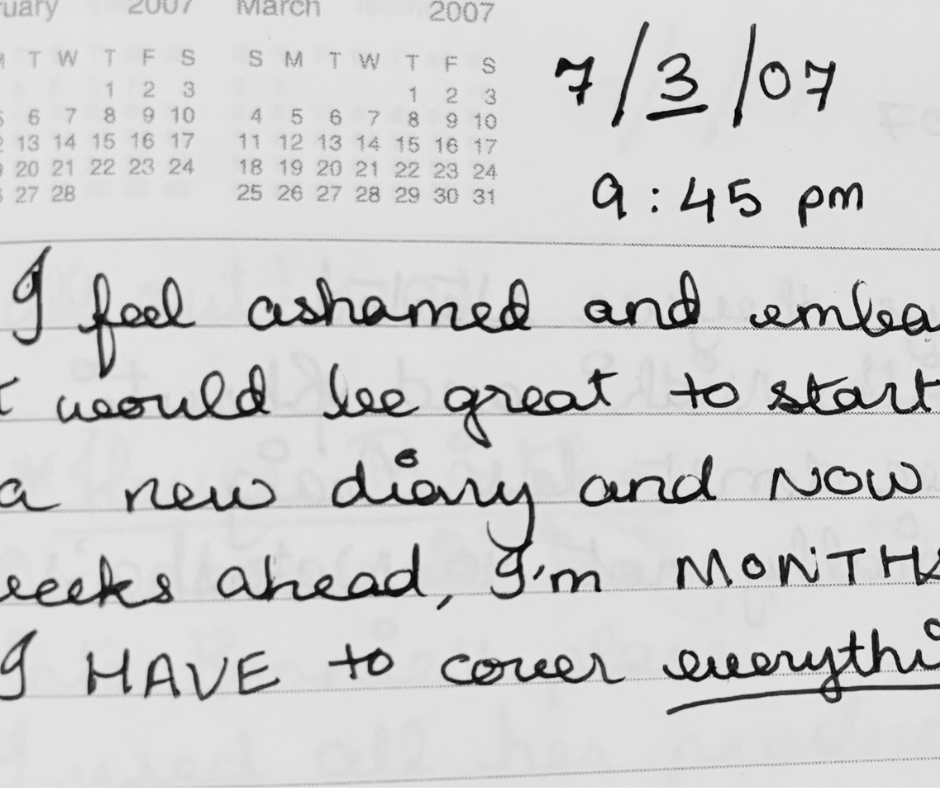In the early months of motherhood, I found some solace in the simple act of baking bread every week. Although it was a completely indulgent and unnecessary activity, it gave me something to look forward to every Sunday during a time when my social life was pretty lean. It was my way of marking the end of each week and celebrating the fact that I made it out to the other side.

I love bread. I’m not the greatest at baking it; I still make rookie mistakes, but I find the tactile process extremely rewarding. To brush up on a few techniques, I followed some bread-baking Instagram accounts that were recommended to me by the all-knowing algorithm.
But from then on, I began noticing my Instagram feed getting a little… weird?
It went from baking bread to people living in rustic little farmhouses, churning butter, wearing old-fashioned frocks, raising chickens, and being utterly enchanting. The crockery was antique and beautiful. The backdrop was green and beautiful. Their lives were just – beautiful.

I was deep in the world of cottagecore. A whimsical internet aesthetic that romanticizes rural life, ‘simpler’ times, and activities like baking, gardening, raising babies and animals together, and being in nature.
It’s a nostalgic escape into a fantasy world that’s slow and peaceful. And it smells like BS to me. Probably because I’m from Mumbai, the city where cottagecore goes to die. Plus, most cottagecore poster girls rarely showed the reality of rural life. The muck, the bugs, the 5 am rooster wake-up calls – these were all suspiciously absent from this dreamy narrative. And sure, I get that it’s cosplay. It’s a fantasy, an escape.
But this curious phenomenon got me thinking about how something as simple as the weekly activity of baking bread can be repackaged and sold to me as a niche lifestyle activity. An aesthetic.

Aesthetics: Two Meanings
Before I go on, let me clarify – In the online world of 2023, the word aesthetic sort of has two meanings. The first is the obvious one: aesthetic refers to all things visually appealing or beautiful. We probably know that already.
The second meaning of the word aesthetic is very different. It’s used to categorize a lifestyle. Your aesthetic refers to the way you dress, your morning routine, your skincare routine, your makeup, your food, your values, your habits, your workouts, your relationships, your spiritual life, your interior decor – basically EVERYTHING about you.
There are different groups of aesthetics;
– some pertain to fashion (old money, coastal grandmother, normcore, Barbiecore, these are all real things, I promise.)
– some are about makeup and skincare (Y2K, clean girl, soft girl, e-girl, whyyy is everything targeted at girls).
– some are clearly lifestyle aesthetics that include style, hobbies, music, and pretty much everything you do (dark academia, ‘that girl, light academia, art hoe, VSCO girl – again, all of these are real things that exist)
So now that we understand that ‘aesthetics’ can mean either visually appealing OR a niche lifestyle – LET US GO ON.
Aesthetics can be very alluring
As I’d knead dough or take a loaf out of the oven, there’s no denying that I’d feel pretty other-worldly. Or, as the internet likes to put it: like I was romanticizing my life. It felt like an escape from reality, like creating a possible fantasy world for myself even for just a couple of hours.
That’s the hook that the post-modern aesthetic movement clings to. If I’m a girl that bakes bread, I might fancy some cute ceramic mugs to go with my rustic kitchen activities. Maybe a cane picnic basket. Eventually, I’m gonna be looking for a frilly feminine dress to wear.
And for me, this new aesthetic lure plugged into my season of motherhood so well. For a brief moment, I felt like I could be in my cottage-core, Disney-princess, rustic-domestic goddess era.

That’s the power of online aesthetics (to weak-willed people like myself, at least). They sell us a bespoke lifestyle that helps us feel like we belong. Do you want a cool water bottle? How about some more desk accessories to liven up your workspace too. And how about you wake up early and go for a walk – that’s what someone with a chic desk set up would do. And since you’re hydrating, add a step or two to your skincare routine. You can be that girl (an internet aesthetic focused on self-improvement, productivity, a healthy lifestyle, and an aspirational vision of the ideal self.)

Do you like having a wardrobe of high-quality basics? Put on a pair of beige trousers and a cardigan, and throw on some big sunglasses. Call it quiet luxury instead. Or better still, the ‘old money’ aesthetic. (An internet subculture devoted to the appearance of timeless elegance and understated sophistication. The goal is to whisper wealth rather than shout it. This aesthetic is populated mostly by people who do not, in fact, come from old money)
The term ‘aesthetic’ silently sneaked (snuck? snack?) its way into our lives to the point where everything we do online has to pay homage to it. Whether it’s the way we arrange our kitchen or our desire to eat beautifully-plated food – if it exists online, it needs to be aesthetic.
Art for art’s sake
In the 1700s, a philosopher named Alexander Baumgarten came up with the word “aesthetic.” It comes from the Greek word ‘aesthetikos’ which has to do with our senses or perceptions. Baumgarten used the term ‘aesthete’ to describe people that appreciated beauty. But beauty was wholly unnecessary in the lives of Britons at the time; things were not deliberately made beautiful until the aesthetic movement happened from the mid-1800s onwards. Before this, everything was ugly as.
And after the aesthetic movement, a painstaking effort was made to ensure that things, even the mundane ones, were pleasing to look at. Buildings, landmarks, cities, artwork. The aesthetic movement became a way for people to escape a crappy and otherwise ugly reality.
The move towards aestheticism had the biggest impact on art. People decided to do away with art that solely had a religious or sociopolitical purpose and decided to just make really beautiful amazing art just for fun. It was art for art’s sake – flamboyant, loud, and entirely for pleasure. Art became a way to define yourself. Your choice of paintings, objects, and interior decoration told people who you were and where you stood in society.

This is a painting called La Ghirlandata by Dante Gabriel Rossetti. Art in the aesthetic movement often depicted delightful red-haired women with huge eyes dressed in light dresses. This signified new ideals of beauty and defied Victorian stiffness.
There’s plenty to be said about the classism of the aesthetic movement and how beauty was a luxury that only a few could afford – but I’ll tackle that in another essay very soon.
Know your aesthetic, know yourself
Let’s cut to today.
Today’s aesthetic movement has been jet-fueled by visual-dominated social media platforms like Instagram, Tumblr, Pinterest, and Youtube. The most mundane activities are becoming aesthetics, churning out new trends daily. It’s gone beyond how we look and has extended to what we consume, where we go, what we do, and our value system.
One’s ‘aesthetic’ is no longer only about beauty. It’s about belonging and finding your tribe. It’s like choosing to play as a character in a video game where each one conforms to a particular set of preferences, unique lingo, clothing style, philosophies, and behaviors.
Now before you jump to protest, “But I don’t have an aesthetic!” – consider the sneaky ways it might already be shaping your world. Your aesthetic – whether you’re aware of it or not – is the canvas you project your identity onto.
It’s the way we choose to dress, the way we decorate our homes, the foods we eat, and the activities we engage in. In that sense, aesthetics aren’t just a superficial pursuit but a deeply intimate expression of who we are and what we value.
The cool part is that these internet aesthetics or subcultures give us room to be creative. They’re an outlet for self-expression, allowing people to discover and enjoy their identity in some gratifying ways. Whether we align ourselves with an aesthetic –– dark academia, grunge, or any of the ‘-cores,’ or if we consider ourselves aesthetic-agnostic –– to control how your life looks is to tell the world who you are. As my favorite Substack author Haley Nahman says, “To know your aesthetic is to know yourself.”

Now, I’m no stranger to the power of aesthetics. I’m a hardcore consumer in every sense of the word. I love beautiful things, I love creating beautiful things or wearing them, I love the pursuit of being beautiful, and I like watching beautiful things. Beautiful things are great!!!!!
But lately, I’ve been noticing a tension between how things look vs. how they feel in many areas of my life. I’ve been trying to figure out what this whole aesthetics thing says about the world and what it says about me.
For example, as I entered motherhood, I carefully thought about the kind of mom I wanted to be. Patient, resilient, present, and joyful. But then I thought about the kind of mom I wanted to appear to be: Put together, well-informed, a picture of effortless grace yet somehow also relatable and accessible.
A lot of these appearances came down to just flimsy aesthetics.
Creating a version of ourselves
Simone Bélanger’s article titled ‘Aesthetics and the Manufacturing of a Curated Self‘ says it perfectly. “It is common knowledge that aesthetics are conditional to the question ‘Who am I?’ Displaying an aesthetic is projecting a chosen identity. But I believe aesthetics portray another interrogation better: What do I reduce myself to?”
If we focus on aesthetics too much, we run the risk of being reduced to a two-dimensional persona. We force-fit ourselves into a predefined box. We possibly even curb our ever-evolving, multifaceted, not-always-pretty but authentic expressions of ourselves.
There’s NO PLACE where this happens more profoundly than the world that we inhabit online. You don’t even need to identify with a particular aesthetic to feel pressured to curate, curate, curate until your life looks like the life you want others to believe you have. When things feel messy and out of control, it can be quite cathartic to tidy up our online selves and portray an image that isn’t real.
Haley Nahman says this about online aesthetic culture, “It feels inextricably tied to modern society’s obsession with images, and the increasing extent to which we use them to understand ourselves, or appease the anxiety produced by not understanding ourselves.”
Millennial makeovers and motherhood
Once I became a mom, the question of how I ought to dress suddenly became a much bigger deal than I ever imagined. Do I stick to the conventional mom attire, where comfort reigns supreme and style is a thing of the past? Heck, no – I felt this major pressure to be a ‘cool mom’ to appear young. Being seen as that ‘woman with a baby’ felt like an unexpected gut punch.
And sure enough, as I tackled these questions, I saw a barrage of reels on the ‘millennial makeover‘. The idea was to help millennials style themselves according to what’s trending today. It was entertaining, but it also felt like a critique of my own style.

When it came to clothing, I found myself constantly second-guessing my choices and wondering how I’d be perceived. Every time I wore an outfit, I’d dread the idea that some passerby might be mentally drafting a makeover strategy for me. It felt strange to grapple with how I ought to present myself at a time when I literally had a million more important things to keep busy with.
Finding joy in beauty vs. losing joy in the pursuit of beauty
It’s impossible to have a conversation about aesthetic trends without talking about consumerism. It’s one of the main things that people take issue with, and for good reason. While it’s great to get inspired by certain trends, especially if they nudge you towards the life you’re trying to build, social media’s endless stream of ‘what’s hot and what’s not’ can seriously mess with our heads – and our wallets.
Every aesthetic comes with a price tag. You’ve got to cough up the cash to dress a certain way, transform your home, change up your lifestyle, buy those plants, and do those envy-inducing things. They don’t come cheap. So it seems like the only thing that all these online aesthetics have in common is: Money.
Eventually, the constant chase for beauty (or aesthetics) can actually achieve the opposite result. It can be anesthetic; that’s exactly how we feel: numb and disillusioned. An obsession with optics can anesthetize us to the beautiful, messy reality of life and ruin our ability to enjoy things.
When I started writing this piece, I thought that our love for aesthetics was an issue of vanity. But I think it’s a lot more complex than that. I guess my real beef with ‘beauty’ is the fact that it keeps changing. Aesthetics are always evolving, and we can never quite keep up. They change with every generation, every culture, and every era.
It doesn’t matter whether I make my entire house an aesthetic haven or embrace the cottagecore lifestyle in its weird entirety – it’s only a matter of time before that aesthetic will become a cringe thing of the past.
So, what should we do?
How do we walk the tightrope between beauty and reality without taking a nose dive into superficiality? How do we go beyond the confines of predefined personalities without reducing ourselves to something as pointless as an Instagram aesthetic?
Back to the bread baking
Sometimes if the stuff I baked looked presentable, I’d share pictures of it. And invariably, someone would admire it or ask me for the recipe. They’d say something kind or thoughtful. It felt great to have this activity that I did solely for me be celebrated by others. It reminded me of how much I actually enjoyed the entire process.
I could sit in the kitchen, cut myself a slice to have with some butter, and see a beloved part of my identity in the process and the outcome. I was a person that liked to bake bread on weekends, and the bread tasted GREAT. It didn’t feel vain or superficial at all.
As I wrap up this very unfinished conversation, my hope is that we understand and appreciate the vast world of internet culture with all its oddities and learn how to enjoy it in a way that feels authentic. If you want to wear a frock and a bonnet and bake sourdough, enjoy it.
If you like carving out time for yourself in the morning to run through an elaborate morning routine, DO IT. If you want to record it to share on Instagram, SHARE WITH ME ALSO. If you feel like a certain style of dressing helps you feel confident, I support that wholeheartedly.
My takeaway is this: We have the capacity to consume, curate, and most importantly, the ability to choose what fills our thoughts, closets, and our lives. We can enjoy the control we have over our online selves and appreciate the sense of belonging and creative expression that comes with identifying with a particular aesthetic.
Aesthetics aren’t the enemy. The enemy, if there is one at all, is forgetting that these are just layers we add to our existence, not the core of who we are. Aesthetic trends will change. The perfectly curated Instagram persona will change. And my hope is that you and I will have the courage to change too.






Leave a comment